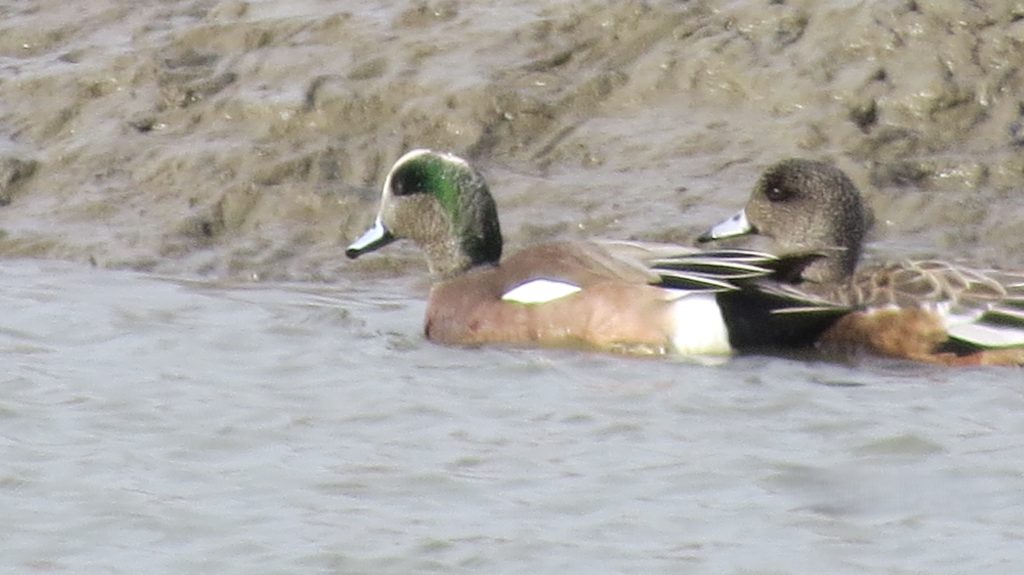Just because the weather has turned cold and the days are shorter does not mean you have to be stuck inside! Skagit County’s skies come to life this time of year with migratory birds, making it a hotspot of winter birdwatching in Washington State.
“During the winter months, Skagit County hosts over 300 bird species, making it one of the richest bird-watching locations in the Pacific Northwest,” shares Kristen Keltz, CEO, Skagit Tourism Bureau. “This diversity includes everything from waterfowl and raptors to songbirds and shorebirds.”

Keltz says thousands of birding enthusiasts come to Skagit County every year during the winter months. Whether they want to photograph, draw or just enjoy the sites, visitors are rarely disappointed by the show natures gives us as the weather turns cold.
“Winter in Skagit County is a peak bird-watching season because the Skagit Valley serves as a major wintering ground for migratory birds, especially waterfowl and raptors,” explains Keltz. “Thousands of snow geese, swans, and other species flock to the region from colder climates in search of food and suitable habitat. The valley’s protected wetlands, fields, and waterways create an ideal environment for these birds.”
You just might even see a gyrfalcon, one of the largest species of falcon in the world, and one of the rarest in the area share Keltz. “Other notable rarities include the yellow-billed loon or the Ross’s goose, which occasionally make appearances during winter migrations.
Where to Winter Birdwatch in Skagit County
All you need is a heated vest, binoculars and a little bit of luck. Then, head out to these winter birdwatching spots in Skagit County recommended by the Skagit Tourism Bureau:
Deception Pass State Park
41229 State Routte 20, Oak Harbor
At Deception Pass State Park you may find loons, grebes, cormorants, sea ducks, gulls, alcids, bald eagles, black oystercatchers, black turnstones and belted kingfishers. Also, forest birds such as woodpeckers, wrens, kinglets, chickadees, nuthatches and crossbills. This park offers boat moorage for birders with a water vessel.
Washington Park
Washington Park Loop, Anacortes
Washington Park in Anacortes has Pacific loons, common murres, pigeon guillemots, marbled murrelets, gulls, cormorants, and many sea ducks including harlequin ducks. You may also see bald eagles and shorebirds, such as black oystercatchers. Washington Park has a boat launch for those wanting to get out on the water to birdwatch.

Fir Island
Skagit Wildlife Area
Fir Island is known for its birding. You may see snow geese, trumpeter and tundra swans, as well as raptors and western meadowlarks.
Skagit Bay
Skagit Wildlife Area
Another particularly great spot in the Skagit Wildlife Area is Skagit Bay. Here, birders may see woodpeckers and other terrestrial species, great-horned owls and northern shrike.
Beaver Lake
Beaver Lake is a popular fishing destination as well as a great birdwatching area. Here you may see redheads, ring-necked, and other ducks as well as trumpeter swans.
Find a complete list of great birding locations on the Visit Skagit Valley website.

Tips for Beginner Birdwatchers in Skagit
Don’t be nervous if you’ve never birdwatched – it’s quite easy! As mentioned, a heated vest and even heated gloves can really help you be more comfortable out in the cold for extended periods of time. Keltz also recommends waterproof clothing and layers.
Keltz also says to be prepared to be up early, as birds are most active in the morning. Looking up the habits of the bird species you are hoping to see can also help you know when the best time to birdwatch is. For example, falcons are night hunters so you may want to head out at dusk to see them in action.
Of course, don’t forget the binoculars! Investing in a good pair is essential for spotting and identifying birds, says Keltz. Once you’ve spotted a bird, Keltz says you can use apps like Merlin Bird ID or a local birding guide book to help you identify what you are looking at.
Lastly, Keltz says to be patient! “Birds are sensitive to noise and movement, so a calm and patient approach will increase your chances of sightings,” she adds.
Most of all, just enjoy nature putting on its winter display. Even if you see no birds – which is not common – the beautiful of the frosty mornings and icy branches are rewards enough.




































